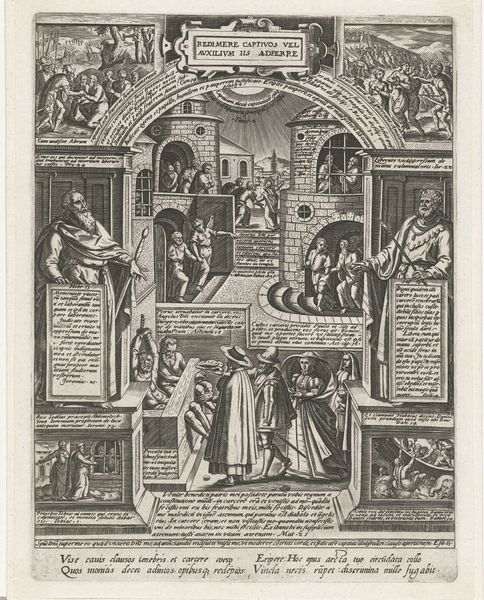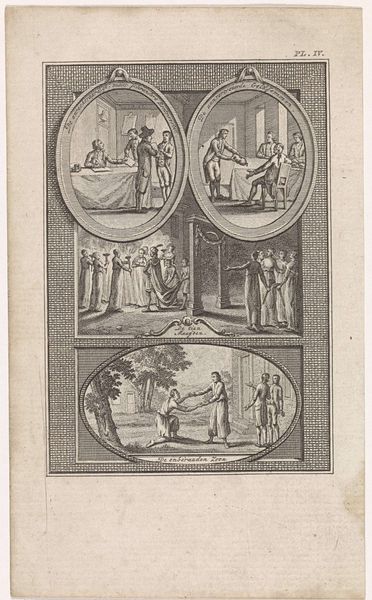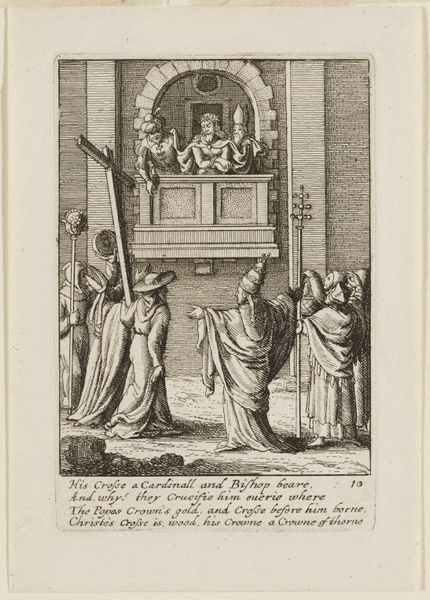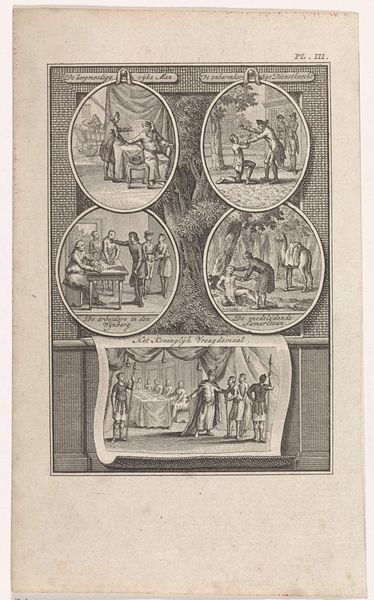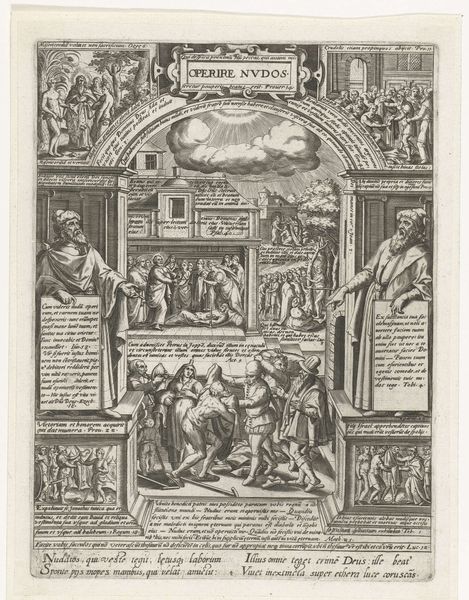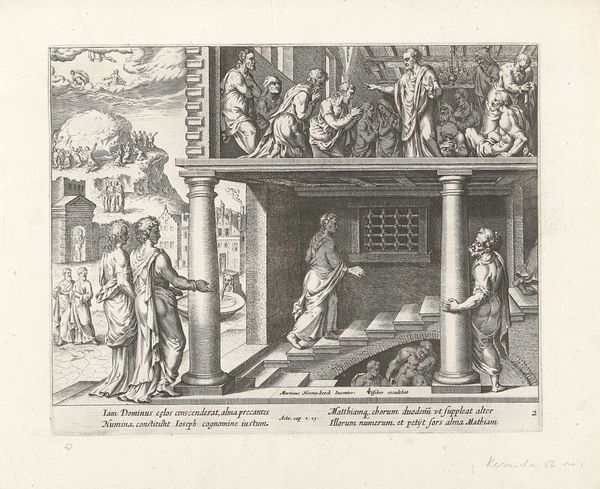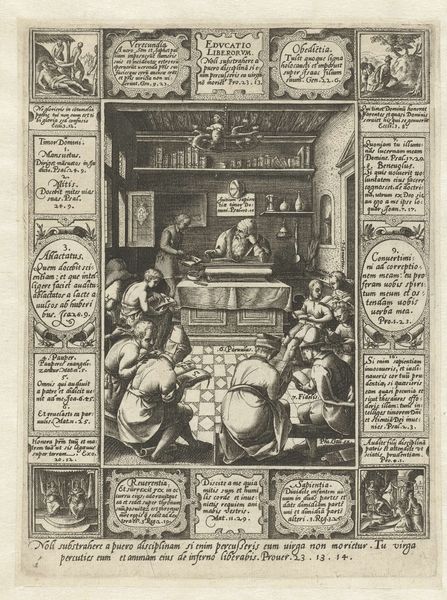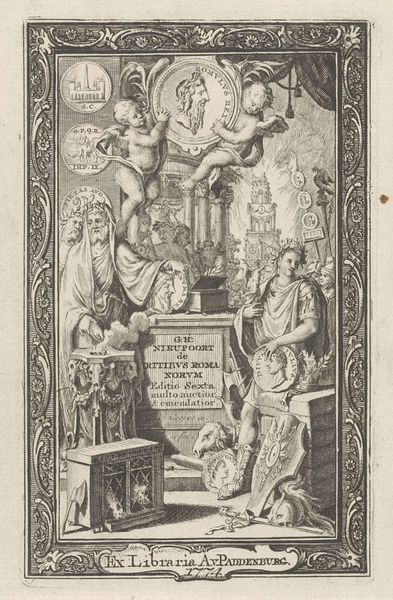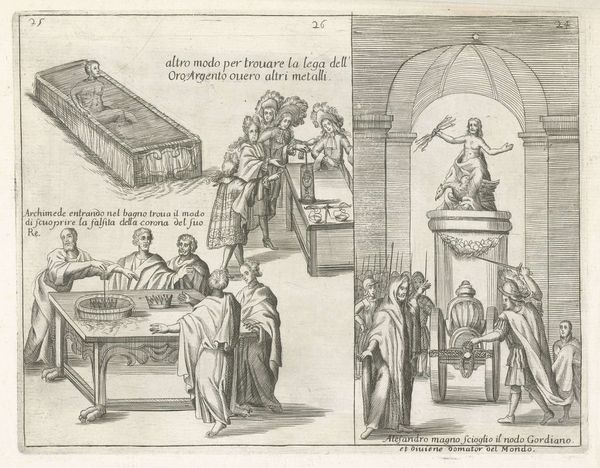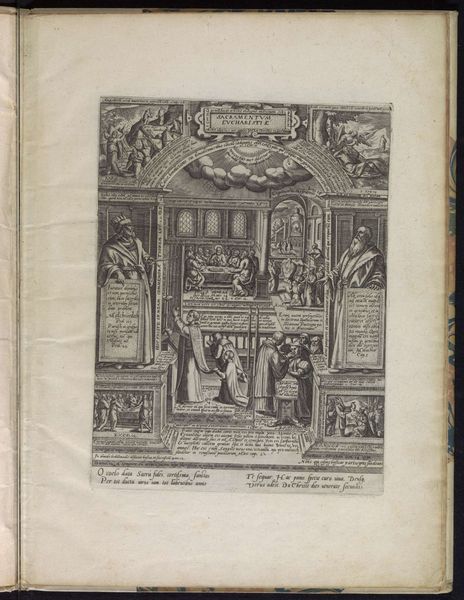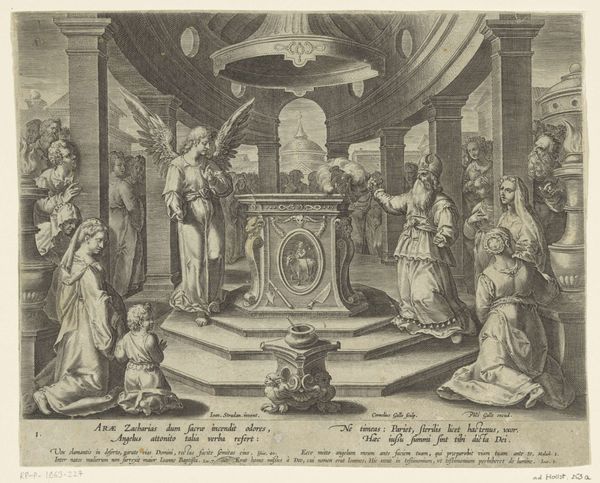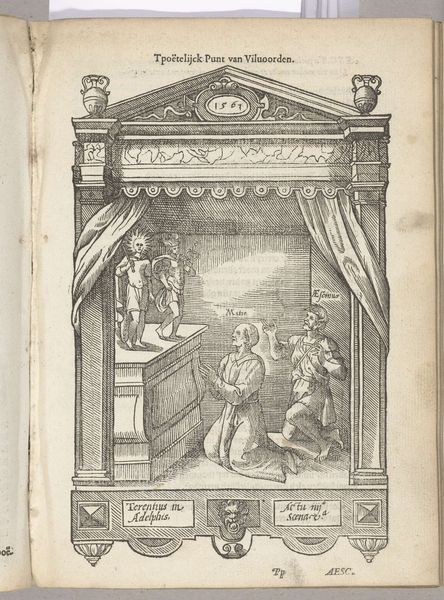
Glasraam van Maximiliaan I en de kist waarin de miraculeuze hostie werd bewaard 1763 - 1765
0:00
0:00
#
comic strip sketch
#
mechanical pen drawing
#
old engraving style
#
sketch book
#
personal sketchbook
#
sketchwork
#
pen-ink sketch
#
pen work
#
sketchbook drawing
#
storyboard and sketchbook work
Dimensions: height 280 mm, width 260 mm
Copyright: Rijks Museum: Open Domain
Editor: So, this is Jacob Folkema’s "Glasraam van Maximiliaan I en de kist waarin de miraculeuze hostie werd bewaard," created sometime between 1763 and 1765. It’s currently at the Rijksmuseum. It depicts stained glass and a chest, rendered in a style that looks almost like an architectural blueprint. What strikes me is how deliberately it frames these historical and religious subjects – almost like preserving evidence. What's your read on this piece? Curator: Well, you’ve astutely pointed out the framing aspect, which is central to understanding this engraving within its 18th-century context. Think about the Rijksmuseum itself – an institution then taking shape that was designed to codify and present Dutch history. This engraving acts similarly: It presents a visual record, almost an official "copy" of significant objects and events related to Maximilian I and the "miraculous host." The architectural rendering reinforces this sense of verifiable historical truth. Editor: So, the visual style emphasizes historical accuracy, positioning the viewer to see these events through the lens of institutional authority? Curator: Exactly! It also highlights the politics of imagery. Depicting Maximilian, a historical figure connected to imperial power, and pairing him with the “miraculous host,” intertwines religious authority with secular rule. Consider the intended audience: were these images for scholarly study or wider public consumption? Editor: It sounds like this piece isn’t just about commemorating history, but also about carefully constructing a particular narrative. The "evidence" is presented with a very specific agenda. It is so interesting that the visual style further helps to validate the legitimacy of that agenda. Curator: Precisely! Examining its provenance—where it was displayed, who commissioned it—would offer further insights. What does the piece prompt you to reflect upon further? Editor: It makes me think about how even seemingly objective records are shaped by the cultural and political forces of their time. It seems there's always an argument being made. Thanks so much. Curator: A fascinating observation! Understanding this piece challenges us to analyze how power structures influence historical narratives – both then and now.
Comments
No comments
Be the first to comment and join the conversation on the ultimate creative platform.
